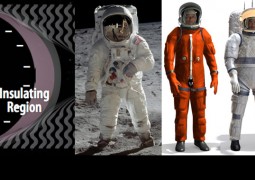The NASA Solar System Exploration Research Virtual Institute (SSERVI) brings scientists from a broad array of disciplines together to solve interdisciplinary problems related to the human exploration of the solar system. SSERVI is uniquely poised to bring people from many nations together to collaborate on these problems through international partnerships.
SSERVI’s International Partnerships Program provides collaboration opportunities for researchers within the global planetary science and human exploration community, working both on development of new science and technical approaches and communicating this science to the public. International partners are invited to participate in all aspects of the Institute’s activities and programs on a no-exchange-of-funds basis.
Non-U.S. science organizations can propose to become either Associate or Affiliate partners of SSERVI. Affiliate partnerships are with non-government institutions (e.g., universities and other research institutions); the majority of existing SSERVI international partnerships are Affiliate. Associate partnerships are government-to-government agreements including those between NASA and international space agencies.
Click here to find out how to apply to the International Partners Program.
Visit our Collaboration Technology Requirements page for more information on the technical aspects of SSERVI’s virtual collaborations.
Canadian Lunar Research Network (CLRN)
Partnership signed July 2008
As NLSI’s first Affiliate partner, the Canadian Lunar Research Network is comprised of 14 institutions, including two
industrial collaborators, and is based out of the University of Western Ontario. Their research focuses on lunar dust and regolith and the effect on robotic and human exploration
systems, isotopic analyses of lunar materials, shock processes in lunar samples and terrestrial analog samples, and
impact ejecta emplacement processes.
Read Full Article →
KARI Lunar Exploration Program
Associate Partnership signed January 2016
This Associate level partnership with KARI Lunar Exploration Program includes the Korea Aerospace Research Institute (KARI), the Korea Institute of Geoscience and Mineral Science (KIGAM), the Korea Astronomy & Space Science Institute (KASI), the Korea Advanced Institute of Science and Technology (KAIST), Kyung Hee University (KHU), and Chungnam National University (CNU). The partnership focuses on contributing to scientific data acquisition about the Moon and support technologies for future lunar exploration.
Read Full Article →

United Kingdom Team

Saudi Lunar and Near Earth Object Science Center
Partnership signed December 2009
The Saudi Lunar and Near Earth Object Science Center resides within, and is governed by, King Abdulaziz City for Science and Technology (KACST). The Center provides the basis for all lunar and Near Earth Object (NEO) research within the Kingdom of Saudi Arabia. [...]
Read Full Article →

Israel Network for Lunar Science and Exploration
Partnership signed in January 2010
Read Full Article →

SSERVI Netherlands Team
Partnership signed in August 2010
The Affiliate partnership with the Netherlands covers the range of science on, of, and from the Moon, and includes nine partnering institutions, and is led out of VU University Amsterdam. The Dutch partners are active participants in the Pan-European Lunar Science Consortium.

German Network for Lunar Science and Exploration
Partnership signed December 2010

SSERVI Italian Team
Affiliate Partnership (INFN) signed September 2014
Associate Partnership signed June 2017
The Italy SSERVI team is coordinated by the Italian Space Agency (ASI) and is composed of a wide group of scientists and engineers from different research institutions, all of them involved in, or with strong interest in, lunar, Mars moons and NEAs science and exploration.

SSERVI Australia Team
Partnership signed July 2015
Principal Investigator Phil Bland (Curtin University, Perth ) and Deputy Director Dr. Marc Norman (Australian National University, Canberra) have assembled a team with a wide breadth of expertise from Australia’s planetary science community to help NASA achieve its goals for human exploration of the solar system.
Read Full Article →

SSERVI French Team
Partnership signed May 2016
Principal Investigator Patrick Pinet (IRAP) has assembled a French team to help NASA with scientific and technological expertise in the study of the Moon and Mercury, Vesta and Ceres asteroids in the Dawn mission, and comets like Churuymov-Gerasimenko (67P) of the ongoing Rosetta mission.
Read Full Article →

SSERVI Japan Team
Partnership signed July 2019
Principal Investigator Dr. Hitoshi Kuninaka (Institute of Space and Astronautical Science [ISAS], a division of JAXA) is in the national center of space science research in Japan. ISAS is strongly involved with the space science and engineering communities across Japan, making it an appropriate host institute for the Japanese SSERVI node. The diversity and range of ISAS activities means that there are numerous areas of overlap where international SSERVI activities could be complementary.
Read Full Article →











